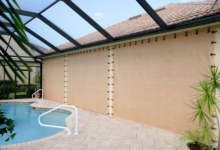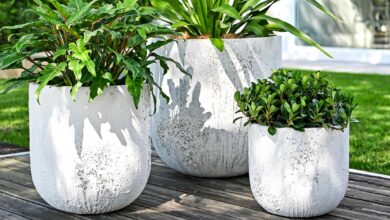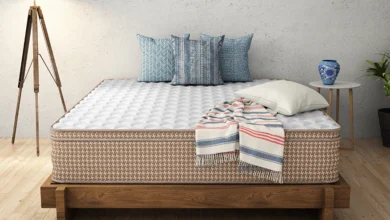
Choosing the Right Aerating Pond Fountain: Factors to Consider
Caring for a pond is a crucial aspect; to enhance its beauty. An aerating pond fountain is one of the most useful tools that can be used to maintain the full-of-life look of a pond. These fountains aid in the circulation of the water and also introduce the needed oxygen into the environment.
An aerating pond fountain not only helps the animals in the pond but also prevents things like algae from growing within the pond. They circulate the water and make sure that the oxygen level in the water is sufficient for both fish and plants.
Selecting the appropriate pond water fountain requires a number of considerations. You should consider the size of the pond, the depth, and the overall appearance that you want to achieve. In this article, the thoughts and variables are outlined in order to assist you to come up with the right decision for your “Aerating Pond Fountains”.
Table of Contents
Understanding Pond Aeration and Its Benefits
Pond aeration can be described as a practice that introduces oxygen into the water in your pond. This is very significant because oxygen is essential for the well-being of the fishes and aquatic plants that dwell in the water. Lacking sufficient oxygen, such water inhabitants can experience difficulties or even die. Aeration also enables the water to maintain its clarity and filter out unnecessary materials such as excess nutrients and waste products.
This is commonly achieved using devices commonly referred to as aerators or aeration systems. These instruments produce motion in water through which air can enter and mix with water. Air dissolved in the water provides oxygen which is used by the fish and the plants to survive in the aquarium.
Kinds of Aerating Pond Fountains
Pond fountains that aerate your pond are not only functional for having a healthy pond but are also decorative for the surrounding area. Several types of aerating fountains are available and all of them are effective in providing the right environment in the pond. You should select the most appropriate type to use depending on your requirements.
a. Floating Pond Fountains
A floating pond fountain is widely used for many garden ponds since they are very flexible and can be easily installed. These fountains are placed on the water surface and take water from near the water surface to spray into the air. This spraying action assists in aerating the water as it comes out of the sprinkler and interacts with air before it gets back into the pond. Floating fountains are particularly appropriate in ponds that do not have a depth of more than 8 feet, since they can oxygenate surface water well.
b. Fixed Pond Fountains
The fixed pond fountains are placed at the center of the pond or any specific point and are generally attached to a base. They can work well for larger ponds where floating fountains may not be able to cover deeper areas of the water. Fixed fountains can also be preferred if you wish to design intricate water spectacles, important for overall garden aesthetics.
c. Solar Pond Fountains
Solar pond fountains are a good choice for those who wish to save power and do not want to constantly pay bills for running their equipment. These fountains are solar powered; the solar panels collect sun power and direct it to powering the fountain pump. It is most effective when installed in a sunny area and well recommended for small to average sized ponds. Because many of them depend solely on the availability of sunlight, they are subject to changes in weather and time of day.
Factors to Consider When Selecting a Aerating Pond Fountains for Your Pond
There are various factors that need to be considered when selecting the appropriate aerating pond fountain for a garden pond. These factors will help you achieve the aim of using the fountain not only for efficient water circulation but also for aesthetics and pond health.
a. Pond Size and Depth
It is important to decide on the fountain based on the size and depth of the pond you possess. For ponds which are not more than 8 feet in depth, water fountains that float are preferably used. They efficiently oxygenate the water surface wherein the majority of the water creatures thrive. For deeper ponds, there are options like fixed or submersible fountains that pump water from deeper areas of the pond to the top, guaranteeing oxygen reaches all levels of the water body.
b. Fountain Capacity
It’s important to ensure that the fountain you choose has the right capacity for the pond; depending on its size. For example, it will not be effective to use a small pump in a large pond in terms of aerating the water. Water fountains should circulate at least the whole capacity of the pond at least once per 120-minute duration, which is a standard measure of aeration.
c. Energy Efficiency
Take the power usage factor of the fountain into consideration, especially if the fountain is to be on all the time. As for energy considerations, fountains which are solar-powered can be ideal since they do not involve paying for the energy used continuously. However, one con is that they might not be available in cloudy or overcast weather. For those who cannot use solar power for some reason, electric fountains with high-efficiency motors can also be relatively cheap.
d. Installation and Maintenance
An advantage of floating fountains is that they are easy to install and maintain, as compared to fixed or submersible fountains. It is recommended to consult with the manufacturer concerning maintenance practices like the frequency of cleaning the pump or the necessity of changing filters. Then make a decision depending on the amount of time and effort you want to spend.
e. Aesthetic Appeal
Another important aspect that entails the design of the fountain is the visual impact it creates. Fountains are available in a wide variety of designs, with the water spraying in single tiers, multi-tier and dancing water systems. Think about what kind of appearance enhancement you wish to have in your pond. The water fountains can also be fitted with LED lights to further illuminate the pond especially during the night.
f. Sound Effects
Listening to the sound of the water brings tranquility to your garden. The volume and kind of sounds of water vary from a quiet flow to a noisy splash. Think about what kind of sound will be more suitable for your garden environment and would be more enjoyable for the listener.
Other Considerations when Aerating Pond Fountains
There are still several other aspects that you have to consider when choosing an aerating pond fountain. These aspects are important in order to achieve both the visual and practical objectives of the fountain, which are its appearance, as well as its efficiency and sustainability.
a. Durability and Material Quality
The longevity of a pond fountain largely depends on the materials used to build it. Using the best materials which include stainless steel or strong plastics is important, as it has to last through the changing weather conditions and water quality fluctuations. Opting for a fountain made of durable materials might be slightly expensive at the start, but it will not require frequent repairs and replacements.
b. Water Depth Compatibility
A floating pond fountain is particularly suitable for shallow water bodies but may call for the use of special aerators capable of operating in deep waters. If you have bottom-dwelling fish, for example, choose a fountain or aerator that fits the depth of the pond to guarantee aeration across the pond, top to bottom. There are some types of aerators that are very effective in deeper water and they can help in the management of oxygen supply in the pond.
c. Wildlife Considerations
If your pond is stocked with wildlife like frogs, or some beneficial insects, then you need to think twice about how your fountain will impact them. Some fountains can offer opportunities for attracting wildlife; others may pose risks to local wildlife. For instance, if the fountain you select has a steady stream of water and is not very noisy, you will be able to attract different types of creatures and increase the biodiversity in your garden.
Conclusion
Selecting the proper aerating pond fountain is an important choice that largely impacts water quality and appearance of the pond. Based on criteria like the pond size and depth, the fountain capacity, energy consumption, and installation conditions, you can choose a fountain that is not only functional but would also enhance the appearance of a garden. Do not forget to keep your focus on the material and its environmental friendliness, as well as the peculiarities of your region’s climate or local fauna. These can make the fountain a useful and eco-friendly addition to your yard.
The right fountain helps in controlling the quality of water and aeration and, most importantly, is a centerpiece that brings liveliness and motion to the pond. Be sure to consider your options and pick the right fountain that would be compatible with the ecosystem of your pond as well as your expectations on how it should look like. This detailed planning will assist you in designing a comfortable and lively outdoor oasis—one that is beneficial for aquatic life.








